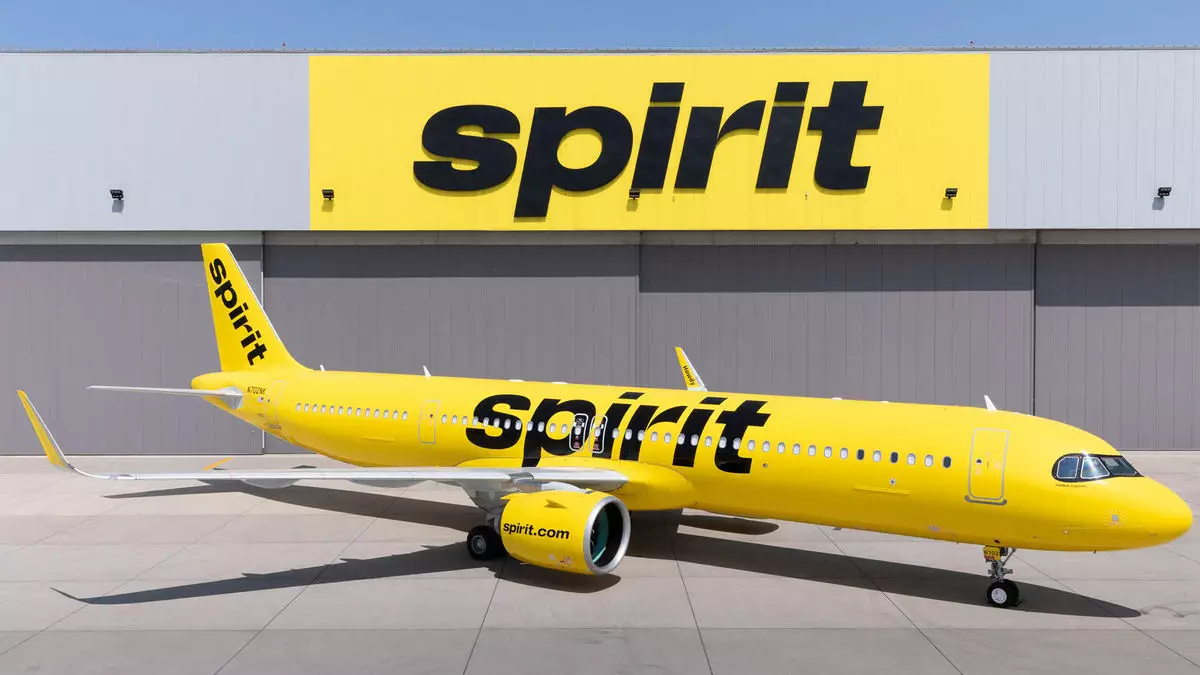Spirit Airlines’ recent filing for Chapter 11 bankruptcy is a significant event in the U.S. aviation sector. Market analysts have painted a grim picture, suggesting that the carrier faces a hostile environment where immediate actions are paramount if it wishes to revitalize its operations. While the airline presents its restructuring as a pathway toward future viability, industry experts warn that the time frame for recovery is alarmingly short. With consumer preferences evolving rapidly and the airline’s reputation at stake, the challenges ahead are formidable.
On November 18, Spirit Airlines entered into a debt-restructuring agreement that could theoretically salvage its financial framework. Existing bondholders are set to convert $795 million of Spirit’s debt into equity shares while also contributing an additional $350 million in fresh investments. Additionally, a $300 million loan is designed to fortify the airline’s cash reserves. Should this arrangement gain court approval, it would significantly alter the landscape of Spirit’s obligations, reducing nearly $1.6 billion in imminent debt due by 2026. However, the deal comes with the caveat that existing equity holders will lose their investments entirely.
This maneuver offers Spirit a grace period, but the immediate challenge is to leverage this lifeline effectively. Without mounting operational profitability soon, the restructuring may end up being a temporary fix rather than a sustainable solution. Analysts like Francois Duflot emphasize that the airline must act swiftly, as its window for recovery is limited to quarters rather than years.
Despite the somber backdrop of bankruptcy proceedings, Spirit maintains that its flights will continue to operate as usual. Customers can still redeem flight credits and loyalty points, which serves as a crucial reassurance during this tumultuous time. Spirit’s statement emphasizes its intent to emerge from bankruptcy even better positioned to capture market share. This mirrors the strategies of other airlines that have successfully navigated similar crises in the past. However, the validity of such claims largely hinges on the execution of a robust recovery plan.
A fundamental aspect leading to Spirit’s current predicament is its struggle to adapt to changing consumer demands. The pandemic has shifted passenger preferences toward more premium experiences, leaving ultra-low-cost carriers like Spirit grappling with dwindling market appeal. In the wake of significant operational losses—amounting to nearly $2 billion since 2020—Spirit’s operating margin was reported at a stark negative-27% in the third quarter, indicating serious underlying issues.
The airline’s previous merger attempt with JetBlue, which could have worked to expand market presence, was thwarted by regulatory antitrust concerns, necessitating a pivot to alternatives for stabilizing finances. In response, Spirit has already begun cutting back flights and re-evaluating its service offers to attract higher-spending travelers who prioritize comfort and convenience over low fares.
Customer Service Enhancements as a Recovery Strategy
To counter its image as a no-frills discount airline, Spirit is experimenting with significant customer service improvements. Proposed enhancements include introducing snack service for all customers, free WiFi for loyalty program members, and the rollout of a premium economy seating option. Such changes mark a critical strategic shift; however, experts caution that rebuilding a tarnished reputation will require consistent delivery and strong marketing efforts over time. Scott Keyes, founder of the flight subscription service Going, suggests that Spirit must contend with a deeply rooted public perception that may resist change.
Looking beyond the restructuring, Spirit Airlines faces a crucial liquidity challenge. By the end of 2024, it anticipates holding $840 million in cash reserves, all while needing to demonstrate a capacity for profitability shortly thereafter. Analysts stress that airlines typically require liquidity equivalent to about 20% of their annual revenues to securely operate. Given Spirit’s revenue of $5.4 billion in 2023, the clock is ticking.
Future outlooks are mixed. While some speculate about potential acquisitions or a turnaround, the realities of the current market landscape must not be ignored. Spirit’s efforts to attract a higher-end market demographic while maintaining its legacy as a low-cost provider will be a difficult balancing act to master.
Spirit Airlines stands at a crossroads marked by both opportunity and substantial risk. The road to recovery post-bankruptcy will demand meticulous planning, rapid execution, and an unwavering commitment to enhancing customer satisfaction. While the airline may have a structural plan in place, the ultimate test will be whether it can adapt swiftly to a fast-changing industry and redefine its identity in a way that resonates with modern travelers. The coming months will be pivotal not just for Spirit, but for the aviation industry as a whole, as it navigates through uncharted skies shaped by economic uncertainties and shifting consumer preferences.

